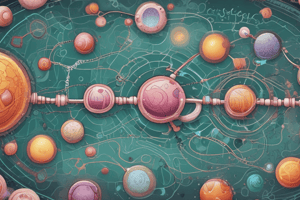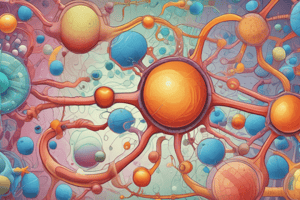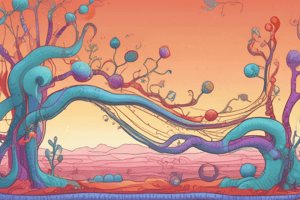Podcast
Questions and Answers
What is the net gain of ATP from glycolysis?
What is the net gain of ATP from glycolysis?
- 1 ATP
- 6 ATP
- 4 ATP
- 2 ATP (correct)
Into how many molecules of pyruvate is one glucose molecule broken down during glycolysis?
Into how many molecules of pyruvate is one glucose molecule broken down during glycolysis?
- 3
- 2 (correct)
- 4
- 1
How many ATP are directly produced from two cycles of the citric acid cycle?
How many ATP are directly produced from two cycles of the citric acid cycle?
- 4
- 1
- 3
- 2 (correct)
What are NADH and FADH2 used for in oxidative phosphorylation?
What are NADH and FADH2 used for in oxidative phosphorylation?
How many ATP molecules can be produced during oxidative phosphorylation?
How many ATP molecules can be produced during oxidative phosphorylation?
Flashcards are hidden until you start studying
Study Notes
ATP Production from Glucose
- Cells produce ATP from glucose in 3 main stages.
Stage 1: Glycolysis
- One glucose molecule breaks down into two pyruvate molecules.
- This process produces a net gain of 2 ATP.
Stage 2: Citric Acid Cycle
- Each pyruvate is broken down in a cycle that must turn twice for each glucose molecule.
- Two cycles produce 2 ATP directly and create NADH + FADH2.
Stage 3: Oxidative Phosphorylation
- NADH + FADH2 are used in electron transport chains.
- This stage can produce up to 34 ATP by using energy from electrons to create a proton gradient, which activates ATP synthase.
Studying That Suits You
Use AI to generate personalized quizzes and flashcards to suit your learning preferences.




